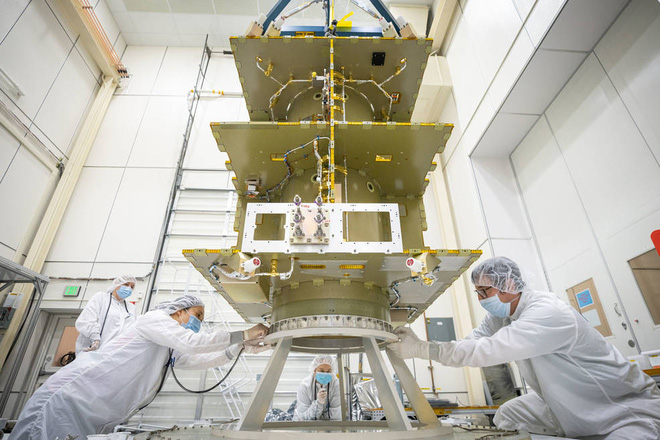The reason for the delay is that the major parts of the DART vessel such as the optical probe and the navigation device and the coil design solar cell array have encountered technical problems.
NASA is currently preparing for an ambitious new space mission: to test a method of deviating the flight path of a meteorite that is likely to collide with Earth with a spacecraft. This test is called DART (Double Asteroid Redirection Test).
To test the feasibility of the project, NASA chose its target as the Dimorphos meteorite system. In Greek, the name Dimorphos means “twin”. As a result, this asteroid system was first discovered in 2003 with up to 2 meteors, including Dimorphos A (diameter 780 m) and Dimorphos B (diameter 160 m), which orbits around Dimorphos A.
According to astronomers, Dimorphos is one of a group of potentially dangerous asteroids that can flatten a city if it collides with Earth. In 2003, Dimorphos flew over Earth at a distance of 7.18 million km. According to calculations, Dimorphos will approach Earth again in 2123 at a distance of 5.9 million km. Because Dimorphos is the largest of all near-Earth asteroids, it’s the perfect choice for testing NASA’s baffle approach.
According to the original plan, in July 2021, NASA will launch the DART spacecraft into orbit to reach Dimorphos in September 2022 – when this asteroid moves between Earth and Mars. However, more recently, NASA said it would delay the launch schedule to February 2022, 7 months later than expected.
The cause of this delay was that important parts of the DART vessel, such as the optical probe and the navigation device and the coil design solar cell array, encountered technical problems. Specifically, the probe must be more carefully protected to avoid damage during orbital launch. Meanwhile, manufacturing of solar cell arrays is not 100% complete as the supply chain is affected by the COVID-19 outbreak.
It is known that after reaching the destination, the DART vessel launched by NASA will dive directly to the surface of the Dimorphos B meteorite at an extremely fast speed, up to 23,760 km / h. Then, in October 2024, the European Aerospace Agency (ESA) will continue to launch a spacecraft called HERA at Dimorphos to study the crater caused by DART and study the change in orbit of Dimorphos B. It is expected that HERA is approaching this asteroid. by the end of 2026 and conduct a six-month survey.
The data collected from Hera will be sent back to Earth, helping scientists to verify whether this collision could deflect the meteor’s flight. From this test result, scientists will consider using a similar plan to protect Earth from the risk of colliding with asteroids in the near future.



